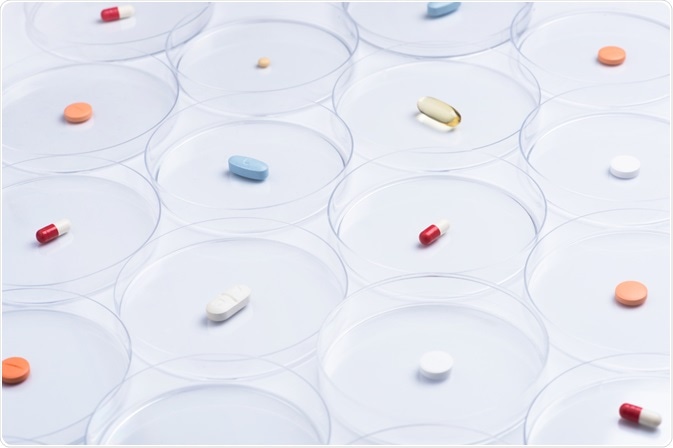As the name suggests, the hit to lead (H2L) stage of drug discovery which aims to discover compounds of interest (leads) from a selection of compounds (hits) that demonstrate promising therapeutic effects. The hit to lead process, which is also referred to as lead generation, typically occurs following the completion of target validation, assay development, and high-throughput screening studies.
 Image Credit: pogonic/Shutterstock.com
Image Credit: pogonic/Shutterstock.com
What is a hit?
A hit is a term used to describe a compound that exhibits desired therapeutic activity at a given target molecule. In order to determine this activity, various assays are used throughout both hit discovery and hit confirmation processes.
Hits provide researchers with important information on the relationship that exists between the molecular structure, identity, and purity of the compound. This plays a significant role in its biological activity with the target.
The main approach to hit discovery is high throughput screening (HTS); assays that are used to screen an entire compound library against a new drug’s target. Knowledge-based screening (also known as focused-based screening), is another crucial aspect of hit discovery. This involves a thorough analysis of a chemical library consisting of smaller subsets of molecules with potential activity at the target site. Fragment-based screening and physiological screening processes may also be used to complement these approaches during the drug discovery process.
Once a series of hits have been discovered, researchers have a wide range of assays they can utilize for the hit confirmation process, all of which vary depending on the nature of the drug’s target, the compound screening scale, and available equipment. Pharmacological assays, for example, are used to identify compounds that exhibit the desired mechanism of action. Assay reproducibility, quality, and sensitivity are particularly important during this stage.
What is the hit-to-lead (H2L) process?
Optimizing the properties of numerous hits is often a multi-dimensional and challenging process. The hit to lead (H2L) aspect of drug discovery was developed to address these challenges and fully explore the chemistry and biological components of hits to ultimately eliminate any weakly active compounds.
An active compound is defined as one that meets a threshold level of activity during primary assay screening processes. Activity levels can be demonstrated by measuring the potency, selectivity, solubility, permeability, metabolic stability, low cytochrome P450 (CYP) inhibition, and desired pharmacokinetic properties.
Challenges of hit to lead (H2L)
Some of the most significant aspects of a hit to lead involve assessing the pharmacokinetic and toxicological parameters of a new drug, as well as optimizing its potency.
One of the most common challenges that medicinal chemists face during a hit to lead is determining how to optimize one property (such as absorption) without compromising another property (such as the drug’s high potency). For example, since absorption of a drug can typically be improved by reducing its molecular weight, a reduction in a compound’s molecular weight can exhibit negative impacts on its overall potency.
To overcome these challenges, parallel optimization of potency, selectivity, pharmacokinetic and physical properties is often conducted. This multiparametric approach collects data on each of the aforementioned drug properties. In doing so, researchers are able to develop drugs that exhibit more uniform characteristics and that will provide more information to their fate during later pre-clinical and clinical studies.
Current approaches to the hit to lead process
Many current hit to lead processes have been further improved by increasing the use of calculations used to measure drug’s ligand efficiency (LE), lipophilic efficiency (LipE), and lipophilic ligand efficiency (LLE). An investigation into these additional molecular descriptors has been shown to improve the potency of new drugs without requiring an increase in their molecular size or lipophilicity.
Drug discovery and development process
Sources:
- Merck/Sigma-Aldrich. Hit Discovery & Confirmation for Early Drug Discovery. sigmaaldrich.com.
- Wolf, M. & Kitchen, D. (2016). Hit-to-lead in drug discovery. Drug Target Review. drugtargetreview.com.
- Baxter, A. D. & Lockey, P. M. (2001). Hit to lead and lead to candidate optimization using multi-parametric principles.
Further Reading